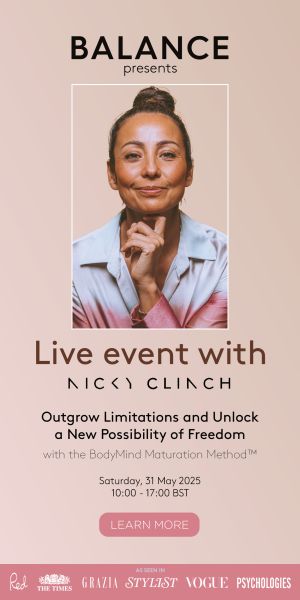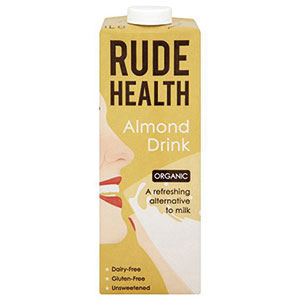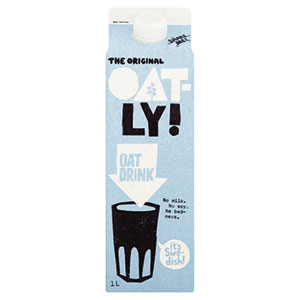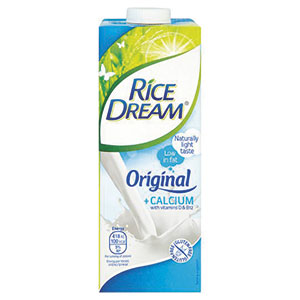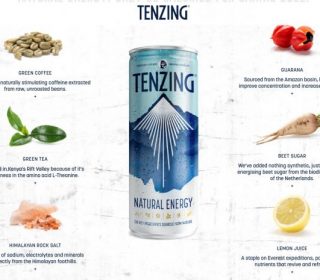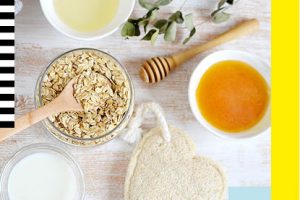The dairy debate: which milk should we be drinking?

When you think about it, it’s quite weird that humans drink cow’s (or sheep’s or goat’s) milk. As vegans will tell you, we’re the only mammals that drink the milk of another animal. Then again, we’re also the only mammals that write symphonies and do heart transplants, so this shouldn’t be the only way to decipher if something’s OK. Cow’s milk, after all, has long been a staple drink in the Western world.
WHY DID EVERYONE START HATING ON DAIRY?
In the past 30 years, however, consumption of dairy products has dropped by 30% and soya, rice and nut milks have seen a huge rise in popularity. The reason? First, boffins in the 1970s told us to cut down on foods containing fat to cut cholesterol. Then, the term ‘lactose intolerance’ entered the mainstream and many people put their improved digestion, skin conditions and sinus problems down to quitting dairy.
Although it’s worth remembering, only 5% of people actually have lactose intolerance, and lactose and dairy intolerance are not the same thing; the first is an intolerance of lactose (a sugar), the second an intolerance of milk protein. One of the reasons goat’s milk has become more popular is because it’s lower in lactose, and contains more easily digestible fats and proteins, which can be softer on the stomach. But the stronger taste isn’t for everyone.
This, along with concerns about the way animals in the food industry are treated, has created a burgeoning market for alternatives made from coconuts, almonds, rice, hemp and oats.
SO SHOULD WE DITCH THE DAIRY MILK?
Nutritionist Amanda Hamilton, co-author of forthcoming book The G Plan Diet (£8.99, Aster), says: ‘dairy products are extremely nutrient-dense. They’re a good source of bone-building calcium, and are rich in protein and B vitamins. These nutrients are essential for immunity and repairing muscles.’
The latest thinking on ‘good fats’ is also helping to champion milk’s nutritional benefits. ‘Researchers in America have found those who choose full-fat dairy products, including milk, have a lower risk of diabetes and obesity,’ says Amanda.
‘One reason for this is the right kind of fats helps us to feel satisfied, stopping us over-eating and craving sweet snacks. There are also more fat-soluble vitamins A and E in full-fat milk, and they’re more easily absorbed from a full-fat dairy product.’
Some believe choosing organic is another way of boosting the nutritional value of cow’s milk. Jerry Naish from Yeo Valley’s family-run farm, which produces organic milk, butter and yogurts, says: ‘Milk, particularly organic, is a source of vitamin K2 which enables you to process more calcium.’ People are also concerned about antibiotics in non-organic milk. Jerry explains: ‘The withdrawal period for animals treated with antibiotics is three times longer for organic milk. If our animals need antibiotics, they do receive them, but they’re not used as a preventative measure or to mask ill health.’
Others are even seeking out ‘raw milk’ (unpasteurised milk) from local farmers’ markets, preferring the full-bodied taste and arguing it contains more B-complex vitamins and anti-microbial proteins, as well as the enzyme lactase. However, one does run the risk of ingesting harmful bacteria such as E. coli.
Since there are now mainstream lactose-free milks on the market, too, there’s no reason to miss out on the main nutritional benefits of the white stuff, but shop wisely. Choosing organic (or raw) milk could be a way of maximising the health advantages, as well as encouraging the food industry to embrace better animal welfare.
DAIRY MILK ALTERNATIVES
Ditching dairy for good reason? Try these…
Rude Health almond drink, 56 cals per 100ml (good for smoothies or breakfast oats, as well as a dairy-free alternative in savoury recipes)
Strictly speaking, this is a rice and almond drink – the rice adds natural sweetness without the need for added sugar. Organic, gluten-free and made from only four other ingredients – spring water, almonds, cold-pressed sunflower oil and sea salt – so great if you’re avoiding additives. Drink cold or use on cereals, it also works well in porridge, but not as good in tea and coffee.
Oatly chilled oat drink, 45 cals per 100ml (separates in hot drinks, but a good dairy-free base to smoothies)
This is the chilled version of Swedish brand Oatly’s ‘oat milk’. Made, as you’d expect, from oats, it’s fortified with vitamins D2, B12 and Riboflavin (B2), as well as calcium. Free from lactose, milk protein and soya. A little added rapeseed oil brings creaminess, but as oats have a natural sweetness to them, it doesn’t need any other additives.
Chi 100% natural Coconut Milk, 31 cals per 100ml (sweetens coffees and breakfast oats)
Obviously, it’s dairy-free, but Chi 100% Coconut Milk is also lactose-free, soya-free and gluten-free. Thankfully, with 11.5% coconut milk, it’s not taste-free – in fact it has a pleasingly creamy taste. Made from pressing coconuts, it’s totally natural, and is a great all-rounder for dinner parties, given it’s suitable for vegans, vegetarians and coeliacs (not many products can make such a boast).
Good Hemp Original, 39 cals per 100ml (good if you’re soya intolerant)
A long-life milk alternative made from ‘hemp cream’, which is extracted from the seeds of cannabis plants – but don’t worry, you won’t feel anything other than refreshed when you drink it. It’s fortified with vitamin D2 and calcium from seaweed, and sweetened with grape juice concentrate. With a slight nutty taste and creamy texture, it’s a good choice if you’re intolerant to soya.
Sojade organic natural soya drink, 37 cals per 100ml (a good switch for dairy in milky coffees)
Unlike some non-dairy products, this actually tastes nice in hot drinks and cereal. Like all soya products, it’s lactose-free and low in saturated fats. It’s also salt-free. As soya contains compounds similar to the female hormone, oestrogen, over consumption can lead to hormonal imbalance and weight gain.
Rice Dream Original, 50 cals per 100ml (the sweet taste makes it a good alternative in breakfasts)
One of the first milk alternatives, Rice Dream is made from naturally sweet fermented rice, so it’s one of the sweeter milk alternatives, although not very high in protein. A good performer in cooking, however, it might need a pinch of salt for savoury recipes. Rather light in texture, it’s not particularly creamy. Fortified with vitamins D2 and B12, as well as calcium.
Read more: What are the benefits of coffee?



